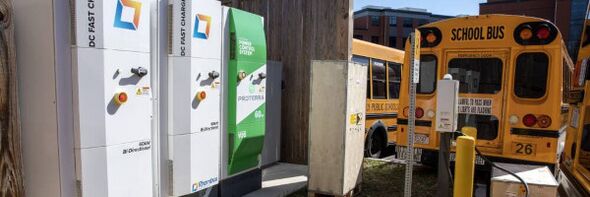Beverly Public Schools Electric Busses
| Beverly Public Schools Electric Busses | |
|---|---|
 Bus and Charger | |
| Team Organizations | Highland Electric Fleets Beverly Public Schools |
| Team Leaders | Dana Cruickshank |
| Participating Municipalities | Beverly MA |
| Sectors | Transportation Utility |
| Status | Implemented |
| Last Updated | May 1, 2024 |
Summary
Beverly Public Schools in Massachusetts has implemented a project utilizing their electric school buses as on-demand power plants. By using bidirectional chargers, the buses' large batteries can both charge and send energy back to the grid, providing backup power during high-demand periods.
Managed by Highland Electric Fleets, the project began with one bus in 2021 and has expanded to include multiple buses, selling significant energy back to the grid. This innovative approach not only reduces reliance on polluting peaker plants but also demonstrates the potential for electric buses to contribute substantial power to the grid if widely adopted. National Grid, partnering with Highland Electric Fleets, supports this initiative and foresees a growing interest in such technology among other school districts. Beverly Public Schools' success has inspired interest from other districts, highlighting the potential for collective action in addressing environmental challenges.
Challenges
- Technical Complexity: The project involves bidirectional chargers, managing charging and discharging cycles, and integrating bus batteries into the grid. This requires sophisticated software and hardware coordination.
- Infrastructure Setup: Constructing chargers on-site and ensuring they meet safety and regulatory standards can be a logistical challenge, especially for schools with limited resources.
- Maintenance and Training: Maintaining electric buses and training drivers on new technology adds operational complexity and ongoing costs.
- Coordination with Utility Companies: Collaborating with utility companies like National Grid requires effective communication and coordination to ensure timely responses to grid demand.
- Scalability: While the project has been successful with a few buses, scaling up to a larger fleet or replicating it in other districts requires careful planning, investment, and support.
- Cost Management: Balancing the costs of electric buses, infrastructure setup, maintenance, and operational expenses against the benefits of grid services and environmental impact requires careful financial planning and management.